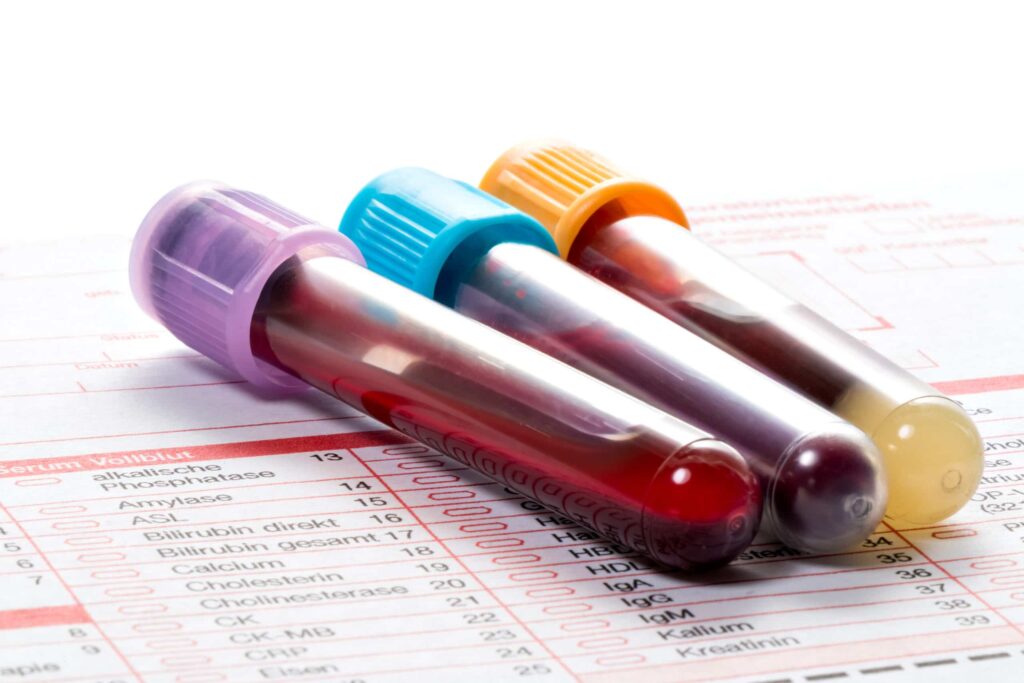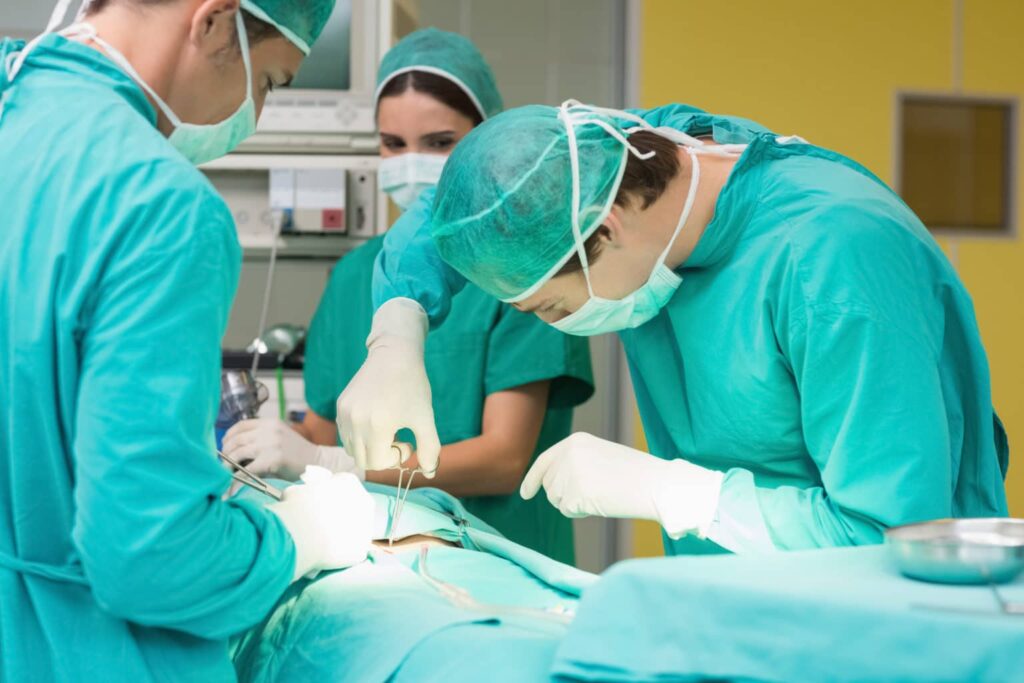Anterior Cervical Discectomy and Fusion (ACDF)
Anterior Cervical Discectomy and Fusion (ACDF) is a fusion procedure for worsening pain in the neck and arm pain. Here, the bones segments of the spine are joined up together (fused) to stop the movement between the segments. MRI scans usually show a disc prolapse (bulging disc) in the neck that may be the cause of your neck and arm pain. The prolapsed disc presses on the nerve that come out of the spine and supplies sensation and power to your arms, hands and fingers. There is neck pain that travels down your arm with pins and needles and occasional numbness.
When is ACDF considered?
Anterior cervical discectomy and fusion (ACDF) is offered to patients who have gone through all conservative measures like physiotherapy, injections and pain management medications. They are not able to control the neck pain and arm pain and therefore choose to have this procedure done. The surgical procedure involves the use of microsurgical techniques to gain access to the cervical spine in the neck.
What happens before the procedure?
Before the procedure, you will be required to coming to the hospital for admission the night before so that we have enough time to do the necessary blood tests, check your blood pressure, temperature and make sure that you are safe and healthy for the procedure. This will also give the anaesthetist who puts you to sleep enough time to check your health and medication and advise on the time of fasting before the procedure.
Before the Procedure:

You’ll be required to come to the hospital the night before so that we can perform simple blood tests, check your temperature and blood pressure. This ensures that you are safe and healthy for the ACDF procedure. You’re also be seen by an experienced Consultant anaesthetist to assess you for general anaesthesia during the procedure. He will also review your medication and advice on the time of fasting for the ACDF procedure. Your spine surgeon and his team will make sure that you have all the necessary information before the procedure.
Most probably you will be advised to:
1) Bring are your medications including the prescription
2) Stop all tablets that causes your blood to become thin
3) Have a blood test to check your fitness for the procedure
How is the procedure done?

You will be given a general anaesthesia may have an experienced anaesthetist. You will have to lie flat on your back and the surgeon makes a small incision in front of your neck. With the use of a microscope, he opens the spinal canal and removes the disc that presses on the nerve that causes neck and arm pain. The whole disc is removed and a synthetic cage is used to replace the disc. This maintains the height and alignment of the spine. The incision in front of the neck is closed with absorbable sutures. You may have a drain from the wound so that there are no complications from bleeding inside the wound.
There are huge benefits from microscopic discectomy procedure. There is less muscle dissection and there is a great view for the surgeon which ensures safety of the procedure. It reduces the risk of complications and the pain after the procedure is very minimal and you hardly have any discomfort during recovery.
What happens after the procedure?

After the procedure the anaesthetist will make sure that you wake up from the anaesthesia safely and when he is satisfied, he will arrange you to be transferred to the recovery room. Once you’re fully awake and ready you will be transferred to your room. The drain will be removed after 24 to 48 hours and the physiotherapist and the spine specialist nurse will help you to get up and take a few steps. When the surgeon and his team are both satisfied with your progress you will be discharged from the hospital with a clear set of instructions to follow.
Discharge after Anterior Cervical Discectomy and Fusion (ACDF)

At the time of discharge from the hospital the spine team will give you a booklet and discharge summary that will have the details of the surgical procedure, medications to continue, physiotherapy exercises to follow along with a follow-up appointment date and time.
What should I do at home after ACDF?
When you reach home make sure that you have adequate rest so that the soft tissues around your neck has enough time to heal well. Make sure that you gradually increase your activities with enough support to move around in the first few days. Try to follow the physiotherapist and the Spine team’s advice when you sit, stand and get on and off the bed.
You will need to take your medication at least for the first few weeks, so that is very little discomfort when you start getting back to normal activity.
Anything that I should look out for after ACDF Surgery?
It is very important that the surgical wound is not wet when you wash and clean yourself at least for the first 14 days after the procedure. Be careful on how much you move your neck in the first few weeks and please let us know if there are any problems or concerns that bothers you. Do not bend or lift anything before the surgeon allows you to do so.
The secretary will book and arrange a follow-up appointment in about two weeks’ time to see the surgeon so that he can check your wound. You’ll be advised physiotherapy rehabilitation for a period of 4 to 6 weeks so that you get back to full action in the shortest possible time.
Follow up appointment after ACDF
My secretary will arrange a follow-up appointment in about two weeks’ time for a review with me. I will look at the wound and remove any stitches and make sure it is healed well. You will then be able to wash the wound.
The physiotherapist will educate you on gentle stretching, strengthening, and conditioning exercises for your neck. You can walk as much as you can but sit for short periods only for the next 4 weeks. Usually patients require a sick note for 6 weeks for work. Full recovery takes 6-8 weeks.
Is ACDF worth?
The pain relief is instant. The prolapsed disc is shaved off from the spinal nerve. There is no further reason for the nerve irritation that has caused you a lot of neck and arm pain. Please take care of the wound. Once the wound is healed well, in about 6-8 weeks (2 months) you will gradually return to normal function.
You must consider if your:
- Pain becomes unbearable
- Arm/Fingers are numb and weak
- Activities are restricted
- Quality of life is poor
What are the risks and complications of ACDF surgery?
There are risks and complications associated with any surgery.
Infection:
Superficial wound infections may occur in up to 5 out of 100 cases. These are treated with a course of Oral antibiotics. Deep wound infections may occur in fewer than 1 out of 100 cases. These do not respond to antibiotics alone and sometimes patients require surgery to clean out the infected tissue.
Patients at risk are those who have:
- Diabetes
- Impaired immune systems
- Your Medical condition that need steroid treatment
Bleeding:
This is most common if you are taking tablets to ‘thin your blood’ like aspirin, warfarin, rivaroxaban or clopidogrel. As the blood is too thin to clot and stop bleeding, there is an increased chance of bleeding into the wound. Medications like non-steroidal anti-inflammatories (NSAIDs) also increases the risk of bleeding. Please make sure that you inform the consultant or his team if you’re taking these tablets. You will need to stop taking these tablets before your procedure as they increase the risk of bleeding.
Damage to Nerve Root:
This occurs in less than 0.5 out of 100 cases in ACDF surgery, but is much more common in repeat surgeries where injury can occur in up to 10 out of 100 cases. This is because the scar tissue from previous surgery looks exactly like a spinal nerve. Therefore the risk of nerve injury is very high. In a Nerve injury, there will be tingling, numbness, weakness or hypersensitivity of the skin over your arm.
Dural Tear:
There is an outer lining that covers the nerve roots. This is called the Dura. During the procedure this outer lining is likely to be torn particularly, if the bone is stuck to the outer lining. As the bone is lifted off this outer lining of the nerve, it is accidentally torn. This does not occur often but it is reported in fewer than 5 out of 100 cases.
Dural tears are more common where patient had previous surgery. The scar tissue from previous surgery looks exactly the same like that of the outer lining of the spinal nerve (dura). The Spine Surgeon takes special care in these situations. If a dural tear occurs, the dura is repaired with stitches, a patch or a special glue.
CSF Leak:
The spinal-cord is surrounded by a special type of brain fluid called the cerebral spinal fluid (CSF). It is in this fluid the brain and the spinal cord floats so that it is protected from the shocks and impacts of every day life. The spinal-cord is surrounded by a special type of brain fluid called the cerebral spinal fluid. It is in this fluid the brain and the spinal cord floats so that it is protected from the shocks and impacts from everyday life.
When the dura is torn, this CSF leaks out into the surrounding tissues. Some patients suffer from headaches but it settles with time. Rarely, the problems with leakage persists and the surgeon might have to return to theatre to repair the dural tear. This risk of a second operation is less than 0.05%.
Recurrent Arm pain:
The pain returns after a period of complete pain relief following ACDF surgery. This occurs when there is a further disc prolapse, excess scar tissue around the sciatic nerve and a lack of rehabilitation causing further irritation and inflammation of the sciatic nerve. It occurs in approximately 5 out of 100 cases at any time from a few days to several years later.
Problems with positioning during ACDF surgery:
These are very rare and happens when patients lay on the operating table. The skin and soft tissue are put under pressure due to the lying in the same position. The nerves are also stretched. We make sure that special gel mattress is used on the operating table and all your pressure areas that are at risk are well padded up. Very rarely blindness is a risk.
Blood Clots:
You won’t be able to move as normally as you would have after any surgical procedure. This causes the blood to stay in one place and not move around very much. Blood clots are formed in your legs and this causes the pain and swelling of the leg. This condition is called Deep Vein Thrombosis (DVT). The clot in the legs really might travel to the lungs are cutting off the blood supply to the portion of the lung. Although rare, if not treated this could be a fatal condition. It is reported in 1 out of 700 cases.
There are many ways to reduce the risk of blood clots:
- Get moving as soon as possible
- Physiotherapist will show you leg exercises
- Walk as much as possible
- Drink plenty of water
- Stop contraceptive pill (4 weeks before)
- Stop HRT tablets (4 weeks before)
-
How long does it take to recover from ACDF surgery?
It usually takes about eight weeks to get back to normal activities stop. That will be a gradual improvement in function and strength. Your physiotherapist will help you to improve your muscle tone and mobility. I normally recommend my patients at least six weeks of time off work. Most of my patients get back to full activities at work in 8 weeks time. You will need to learn new ways to lift, bend and twist so that you do not put too much strain on your back and protect the surgical procedure.
What is the success rate of ACDF surgery?
ACDF has a very good success rate. About 90 to 95% of my patients in London improve their symptoms and get back to normal work in about 2 to 3 months time. However, there is a small recurrence rate of a further disc prolapse (5%) at some point in the future.
Success from ACDF surgery depends on program of stretching, strengthening and aerobic conditioning as recommended by your physiotherapist. It also means that you should restrict yourself from active movements of your neck for the first six weeks following surgery.
